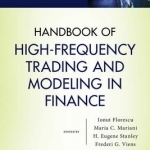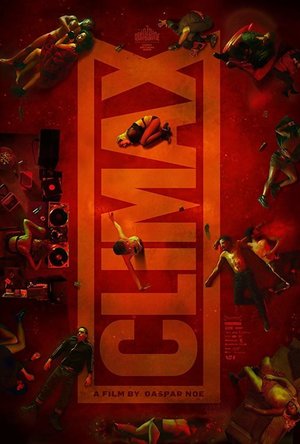Search

Latent Variable Modeling with R
W. Holmes Finch and Brian F. French
Book
This book demonstrates how to conduct latent variable modeling (LVM) in R by highlighting the...

Handbook of High-Frequency Trading and Modeling in Finance
Ionut Florescu, Maria C. Mariani, H. Eugene Stanley and Frederi G. Viens
Book
Reflecting the fast pace and ever-evolving nature of the financial industry, the Handbook of...

R Programming Language with Essential Reference
Reference and Utilities
App
The classic R programming language for iPad, iPhone and iPod touch. Programming language is a...
Gareth von Kallenbach (980 KP) rated Resident Evil: Revelations in Video Games
Jun 19, 2019
Following the disappointing fan response to Resident Evil 6 and Resident Evil: Operation Raccoon City, Capcom has taken a page from the past to present one of the more enjoyable Resident Evil games in recent memory. Resident Evil: Revelations first saw life as a Nintendo 3 DS game which now has been polished up and released it for the PlayStation 3, Xbox 360, and Wii U gaming systems.The game does not acquire any previous experience with the resident evil series although the story is set approximately between Resident Evil 4 and 5.
Playing as Jill Valentine to start players must navigate and explore various locales as they attempt to locate Jill’s missing partner Chris. The game is broken down into chapters and in some chapters players will play as Chris when aspects of the storyline are told in a nonlinear fashion.
Although this sounds confusing it’s a very clever way of advancing the story without giving too much away. Players are given a scenario and then in a future mission, there given the opportunity to fill in the blanks and discover how the later or past events transpired.
The game uses an over the shoulder perspective which although a third person survival horror shooter, the game effectively mixes various styles of play as players may go to a first-person mode should they feel the need.
This is not a straight run and gun game; instead players have to use a device known as Genesis in order to scan rooms to find clues as well as much-needed objects such as keys and ammunition. Of course scanning enemies is always a good idea I just suggest that players do that only after dispatching them.
The game does have its share of puzzles that must be solved as players have to do things such as hack electrical boxes in order to gain access to various locales. Although this at times slows down the flow of the game it does provide a break from the action at times when it is most needed.
Keep in mind this was originally designed for handheld control system of the game is very streamlined and effective. Players can change weapons easily and I was able to navigate the map without any real problems aside from the fact that most of the game occurs within a very dark setting and occasionally requires you to hug the wall in order to find your way around obstacles.
Combat is very simple where you simply raise the weapon and fire your shots or toss a grenade or exploding decoy at your intended victims. While very creepy most of the enemies I encountered move very slowly and tended to have a very linear and predictable attack path. I found that firing my weapon and back stepping and using object such as table between us while reloading usually was more than sufficient to dispatch them with little to no threat.
The only times I really was challenged were moments when I was forced to be stationary or encounter enemies with no weapon available to me. The game does offer three gameplay settings so you can find one that works best for you. I left it on Normal during my review sessions.
The game’s graphics are dated and while enhanced for consoles they are coming from a handheld environment so players expecting state-of-the-art graphics are going to be out of luck.
That being said the storytelling was very enjoyable and I found myself being quickly immersed into the game more so than I had at any point in the previous two Resident Evil games.
There is also an online Raid mode for two players team up to take on waves of incoming bad guys which adds an enjoyable new dimension to the game as well as an extra level of replayability.
The voice acting game is solid and really helps propel the characters although some of the lines are stuff that B-movie cheese has made legendary.
That being said, the game definitely has a lot going for it as a must own for fans of the series or for anybody looking for a return to the basics that made the franchise what it is today.
http://sknr.net/2013/05/31/resident-evil-revelations/
Playing as Jill Valentine to start players must navigate and explore various locales as they attempt to locate Jill’s missing partner Chris. The game is broken down into chapters and in some chapters players will play as Chris when aspects of the storyline are told in a nonlinear fashion.
Although this sounds confusing it’s a very clever way of advancing the story without giving too much away. Players are given a scenario and then in a future mission, there given the opportunity to fill in the blanks and discover how the later or past events transpired.
The game uses an over the shoulder perspective which although a third person survival horror shooter, the game effectively mixes various styles of play as players may go to a first-person mode should they feel the need.
This is not a straight run and gun game; instead players have to use a device known as Genesis in order to scan rooms to find clues as well as much-needed objects such as keys and ammunition. Of course scanning enemies is always a good idea I just suggest that players do that only after dispatching them.
The game does have its share of puzzles that must be solved as players have to do things such as hack electrical boxes in order to gain access to various locales. Although this at times slows down the flow of the game it does provide a break from the action at times when it is most needed.
Keep in mind this was originally designed for handheld control system of the game is very streamlined and effective. Players can change weapons easily and I was able to navigate the map without any real problems aside from the fact that most of the game occurs within a very dark setting and occasionally requires you to hug the wall in order to find your way around obstacles.
Combat is very simple where you simply raise the weapon and fire your shots or toss a grenade or exploding decoy at your intended victims. While very creepy most of the enemies I encountered move very slowly and tended to have a very linear and predictable attack path. I found that firing my weapon and back stepping and using object such as table between us while reloading usually was more than sufficient to dispatch them with little to no threat.
The only times I really was challenged were moments when I was forced to be stationary or encounter enemies with no weapon available to me. The game does offer three gameplay settings so you can find one that works best for you. I left it on Normal during my review sessions.
The game’s graphics are dated and while enhanced for consoles they are coming from a handheld environment so players expecting state-of-the-art graphics are going to be out of luck.
That being said the storytelling was very enjoyable and I found myself being quickly immersed into the game more so than I had at any point in the previous two Resident Evil games.
There is also an online Raid mode for two players team up to take on waves of incoming bad guys which adds an enjoyable new dimension to the game as well as an extra level of replayability.
The voice acting game is solid and really helps propel the characters although some of the lines are stuff that B-movie cheese has made legendary.
That being said, the game definitely has a lot going for it as a must own for fans of the series or for anybody looking for a return to the basics that made the franchise what it is today.
http://sknr.net/2013/05/31/resident-evil-revelations/
Gareth von Kallenbach (980 KP) rated Climax (2018) in Movies
Jul 2, 2019
If you’re going to see this film, it likely won’t be a huge surprise to you. Those that will buy a ticket already know who Gaspar Noé is and what he’s all about. Films like Irreversible and Enter the Void have defined him as an artist of scandal, evil and the extreme. Climax follows directly in the footsteps of those films, but at this point it does leave us wondering if there’s any room for growth in this writer/director or if we’ll just continue to get more of the same until we’re sufficiently numb to his offerings.
The setting for Noé’s latest tour of human horrors is the final rehearsal of a French dance troupe set to tour internationally. The film begins with the final scene of the movie and the ending credits. Then, just as your confusion has built to appropriate levels, things actually begin with videotaped interviews of all 22 members in an attempt to give you some semblance of character introduction. Shown on an older TV, the screen is surrounded by books and plays focused on ultra-negative philosophical views and subjects such as schizophrenia and suicide. So, despite the rather upbeat and optimistic responses of the prospective dancers, the tone is already being set for the madness that is about to commence.
From there we are taken to the big dance number. A ten-minute single shot involving the entire cast choreographed to 90’s EDM music. While this scene felt a little bit long, it did nearly as much to introduce the characters as the audition tapes shown earlier. Each dancer has a unique style and flair that executes a certain character development. Once the dance is complete it feels like the movie finally begins and the cast starts their post-rehearsal party. The soiree involves dancing (of course), drinking (homemade sangria) and some minor cocaine use. But it mostly consists of quick shots between different cast members taking part in some intergroup gossip. We are treated to one more (non-choreographed) dance scene with each individual showing their talents in a circle of their comrades, then we break again for more conversation. As the party continues on everyone starts to feel a little bit funny. They quickly deduce that the sangria has been spiked with LSD, but cannot determine who drugged them.
And this is where the hour-long journey into hell embarks from. The realization that they have been drugged seems to worry them very little, but does instantly turn them all against each other. The effects of the LSD ramp up rather quickly and as the cast members descend into madness the audience is treated to a myriad of trauma and depravity including: rape, incest, self-mutilation, child electrocution and an attempted abortion via a swift kick to the stomach. None of this should be any surprise to someone familiar with Noé’s work. But if this is your first experience with his particular brand of filmmaking, then be prepared to leave no perverted stone unturned.
One of the most impressive things about this film is how little preparation actually went into it. The entire film was shot in 15 days and edited to completion in only 3 months after that in order to meet the Cannes festival deadline. In addition, it was shot with a mere 5 pages of script. The majority of the film consists of both dancing and psychotic undulations inspired by web videos of people high on crack, ecstasy and acid which were hand-selected by Noé. So, despite the assumed need for structure that comes with extended tracking shots such as these, the whole movie is (surprisingly) mostly ad-libbed. Only the opening dance scene is choreographed with all of the remaining ones being the result of the how the dancers chose to express themselves through dance.
In the end you’ll be left wondering if all of the shock and awe that’s been served to you actually meant something, or if it was simply sensory overload for the sake of itself. And that’s where the movie really falls short. If Noé had meant for any sort of deeper meaning in this film, it was ultimately lost to extreme subtlety. I did my best to find the clever allegory here (French history and culture, biblical stories, etc.) and I admittedly fell short. “Birth is a unique opportunity. Life is an impossible collective. Death is an extraordinary experience,” read three title cards which flash throughout the journey of Climax. Although these sayings are poetic and beautiful, they seem to have little or loose application to the actual storyline.
The strongest feelings in this film are not evoked from any sort of meaning or fable-style lesson. They come from the distress and disgust brought about by the actions of the characters and, more so, the beautifully executed cinematography. Every filming technique meant to cause discomfort is present here including: long tracking shots, inverted imagery, black screen with nonlinear sounds and subliminal images. The application and combination of all of these effects means that much credit for this film should most likely go to Noé’s DP, Benoit Debie.
Fundamentally, the judgement for a Gaspar Noé film exists on a different scale than any other film. And while that concept can be new and exciting when the first shocking film debuts, you quickly realize that subsequent ones have to continue to push the boundaries that were originally broken. Otherwise you run the risk of becoming stale. We may have gotten to that point now with Noé. Climax brings very little new shock to the table for a director who has developed his reputation as a purveyor of wickedness. Those who attend this movie will be looking for him to push their horror to new levels, but will likely end up unfulfilled. Although the lack of a new frontier doesn’t remove all of the value for the film, Noé has made implicit promises through his other work which he has failed to deliver upon with Climax.
The setting for Noé’s latest tour of human horrors is the final rehearsal of a French dance troupe set to tour internationally. The film begins with the final scene of the movie and the ending credits. Then, just as your confusion has built to appropriate levels, things actually begin with videotaped interviews of all 22 members in an attempt to give you some semblance of character introduction. Shown on an older TV, the screen is surrounded by books and plays focused on ultra-negative philosophical views and subjects such as schizophrenia and suicide. So, despite the rather upbeat and optimistic responses of the prospective dancers, the tone is already being set for the madness that is about to commence.
From there we are taken to the big dance number. A ten-minute single shot involving the entire cast choreographed to 90’s EDM music. While this scene felt a little bit long, it did nearly as much to introduce the characters as the audition tapes shown earlier. Each dancer has a unique style and flair that executes a certain character development. Once the dance is complete it feels like the movie finally begins and the cast starts their post-rehearsal party. The soiree involves dancing (of course), drinking (homemade sangria) and some minor cocaine use. But it mostly consists of quick shots between different cast members taking part in some intergroup gossip. We are treated to one more (non-choreographed) dance scene with each individual showing their talents in a circle of their comrades, then we break again for more conversation. As the party continues on everyone starts to feel a little bit funny. They quickly deduce that the sangria has been spiked with LSD, but cannot determine who drugged them.
And this is where the hour-long journey into hell embarks from. The realization that they have been drugged seems to worry them very little, but does instantly turn them all against each other. The effects of the LSD ramp up rather quickly and as the cast members descend into madness the audience is treated to a myriad of trauma and depravity including: rape, incest, self-mutilation, child electrocution and an attempted abortion via a swift kick to the stomach. None of this should be any surprise to someone familiar with Noé’s work. But if this is your first experience with his particular brand of filmmaking, then be prepared to leave no perverted stone unturned.
One of the most impressive things about this film is how little preparation actually went into it. The entire film was shot in 15 days and edited to completion in only 3 months after that in order to meet the Cannes festival deadline. In addition, it was shot with a mere 5 pages of script. The majority of the film consists of both dancing and psychotic undulations inspired by web videos of people high on crack, ecstasy and acid which were hand-selected by Noé. So, despite the assumed need for structure that comes with extended tracking shots such as these, the whole movie is (surprisingly) mostly ad-libbed. Only the opening dance scene is choreographed with all of the remaining ones being the result of the how the dancers chose to express themselves through dance.
In the end you’ll be left wondering if all of the shock and awe that’s been served to you actually meant something, or if it was simply sensory overload for the sake of itself. And that’s where the movie really falls short. If Noé had meant for any sort of deeper meaning in this film, it was ultimately lost to extreme subtlety. I did my best to find the clever allegory here (French history and culture, biblical stories, etc.) and I admittedly fell short. “Birth is a unique opportunity. Life is an impossible collective. Death is an extraordinary experience,” read three title cards which flash throughout the journey of Climax. Although these sayings are poetic and beautiful, they seem to have little or loose application to the actual storyline.
The strongest feelings in this film are not evoked from any sort of meaning or fable-style lesson. They come from the distress and disgust brought about by the actions of the characters and, more so, the beautifully executed cinematography. Every filming technique meant to cause discomfort is present here including: long tracking shots, inverted imagery, black screen with nonlinear sounds and subliminal images. The application and combination of all of these effects means that much credit for this film should most likely go to Noé’s DP, Benoit Debie.
Fundamentally, the judgement for a Gaspar Noé film exists on a different scale than any other film. And while that concept can be new and exciting when the first shocking film debuts, you quickly realize that subsequent ones have to continue to push the boundaries that were originally broken. Otherwise you run the risk of becoming stale. We may have gotten to that point now with Noé. Climax brings very little new shock to the table for a director who has developed his reputation as a purveyor of wickedness. Those who attend this movie will be looking for him to push their horror to new levels, but will likely end up unfulfilled. Although the lack of a new frontier doesn’t remove all of the value for the film, Noé has made implicit promises through his other work which he has failed to deliver upon with Climax.

